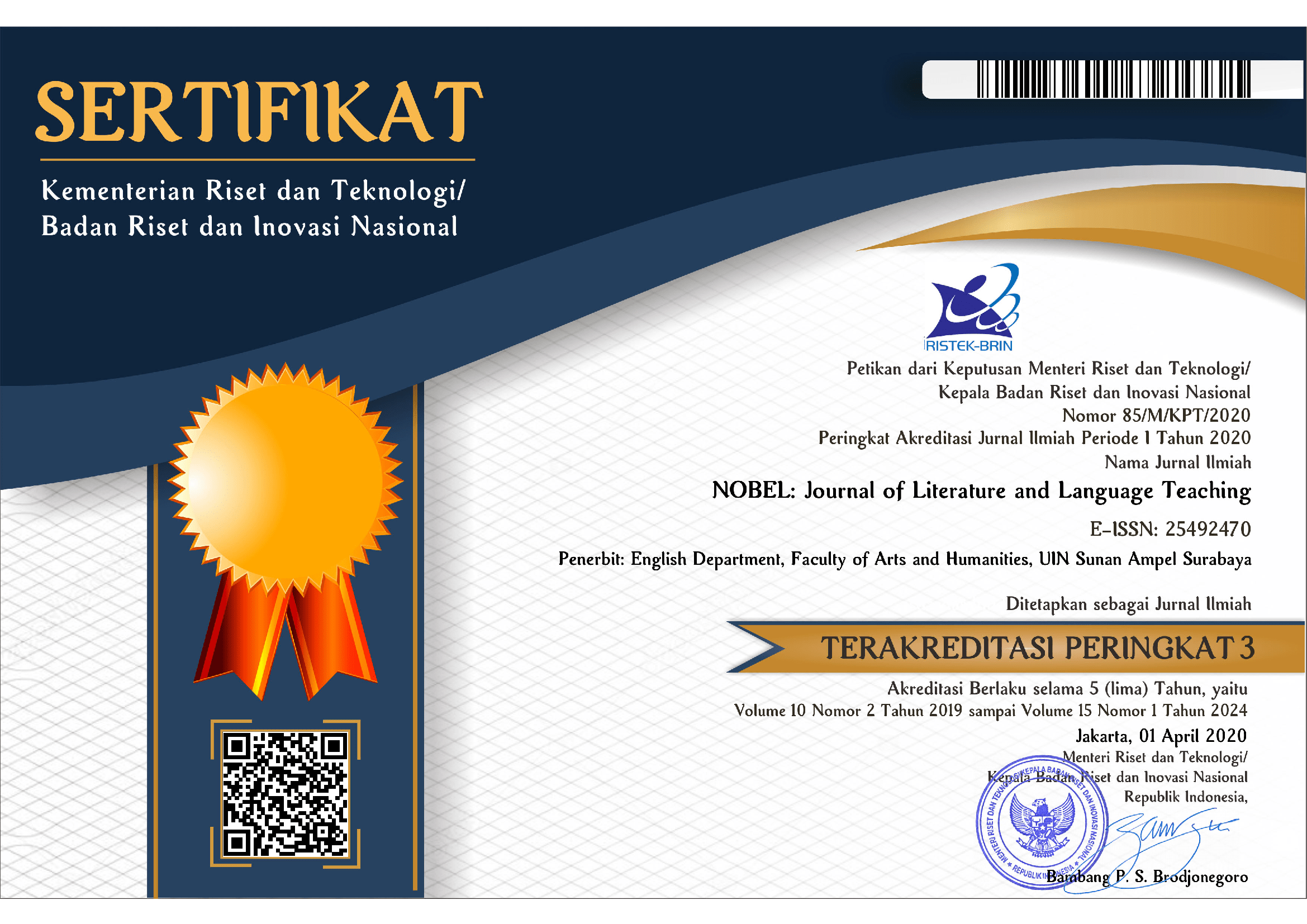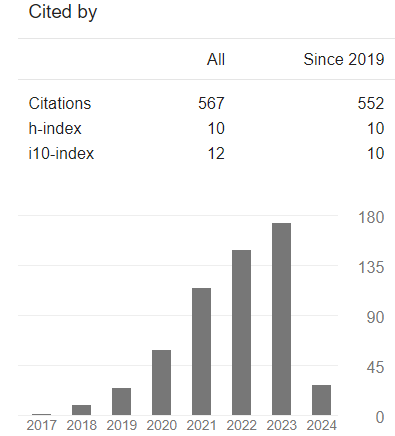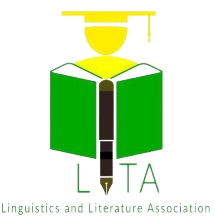Grotesque Character as A Criticism to Racism in Flannery O' Connor's "The Geranium"
DOI:
https://doi.org/10.15642/NOBEL.2020.11.2.137-148Keywords:
Grotesque; freak; Southern; Northern; Black; Flannery O’ConnorAbstract
Grotesque character commonly refers to Southern Black or Black character who represents “misfit” and “freak” and bad things. Grotesque character is often used in Flannery O’Connor’s short stories to criticize the issues in society. In the short story “The Geranium,” she criticizes the Black racial issue in White society at that time. This paper aims at showing how a White character, Old Dudley, who is considered as having high status, is placed as a grotesque character in the form of a “freak” person with dislocations and hallucination. This paper also intends to show how O’Connor represents Southern, and Northern Black characters legitimated as grotesque or evil in White society indeed have good sides. This study finds out that grotesque is used to address a criticism toward White supremacy on Black subordination and that grotesque is indeed a bad part of the dual quality (good and bad) of all human characters in the short story.
Downloads
References
Evans, R.C. (2009). A Sharp Eye for the Grotesque in Flannery O’ Connors’ ‘Good Country People’. In H. Bloom & B. Hobby (Eds.). The Grotesque, (pp.177-188). USA: Infobase Publishing.
Muller, G. (2009). The Grotesque Protagonist. In H. Bloom & B. Hobby (Eds.). The Grotesque, (pp.177-188). USA: Infobase Publishing.
Carroll, R. (2000). Foreign bodies: history and trauma in Flannery O'Connor's' The Displaced Person'. Textual Practice, 14(1), 97-114. DOI: 10.1080/095023600363364
Edwards, J.D., & Graulund, R. (2013). Grotesque. London: Routledge.
Fowler, D. (2003). Writing and Rewriting Race: Flannery O'Connor's "The Geranium" and "Judgement Day". Flannery O'Connor Review, 2, 31-39. Retrieved September 1, 2020, from http://www.jstor.org/stable/26669783
Haar, M. (1983). The Phenomenon of the Grotesque in Modern Southern Fiction: Some Aspects of Its Form and Function. Retrieved July 1, 2020, from https://www.diva-portal.org/smash/get/diva2:643431/FULLTEXT02.pd
Holman, C.H. (1985). A Handbook to Literature. United States of America, USA: The Odyssey Press, Inc.
Jalaluddin N. (2013). The Consciousness of Black Identity in Amiri Baraka’s Poems. NOBEL: Journal of Literature and Language Teaching, 4(1). DOI: 10.15642/NOBEL.2013.4.1.%p
O’Connor, F. (1971). The Complete Stories. United States of America: Farrar, Straus, and Giroux.
Weinshilboum, D. (2009). Flannery O’Connor’s Uncanny Vision of Race and Race Relations. Retrieved July 1, 2020, from http://dspace.calstate.edu/bitstream/handle/10211.9/121/completethesis.pdf?sequence=1
Williams, M. G. (1976, December). Black and White: A Study in Flannery O'Connor's Characters. In Black American Literature Forum, (pp. 130-132). School of Education, Indiana State University.
Windriani, D. (2018). Purifying the 1920’s Southern American Society: The Grotesque in Flannery O Connor’s “A Good Man is Hard to Find, 4(1), 50-54. https://e-journal.usd.ac.id/index.php/IJELS/article/view/1634
Downloads
Published
How to Cite
Issue
Section
License
Copyright (c) 2020 NOBEL: Journal of Literature and Language Teaching

This work is licensed under a Creative Commons Attribution 4.0 International License.







